Sarah Cousineau
Distance Preserving Machine Learning for Uncertainty Aware Accelerator Capacitance Predictions
Jul 05, 2023Abstract:Providing accurate uncertainty estimations is essential for producing reliable machine learning models, especially in safety-critical applications such as accelerator systems. Gaussian process models are generally regarded as the gold standard method for this task, but they can struggle with large, high-dimensional datasets. Combining deep neural networks with Gaussian process approximation techniques have shown promising results, but dimensionality reduction through standard deep neural network layers is not guaranteed to maintain the distance information necessary for Gaussian process models. We build on previous work by comparing the use of the singular value decomposition against a spectral-normalized dense layer as a feature extractor for a deep neural Gaussian process approximation model and apply it to a capacitance prediction problem for the High Voltage Converter Modulators in the Oak Ridge Spallation Neutron Source. Our model shows improved distance preservation and predicts in-distribution capacitance values with less than 1% error.
Multi-module based CVAE to predict HVCM faults in the SNS accelerator
Apr 20, 2023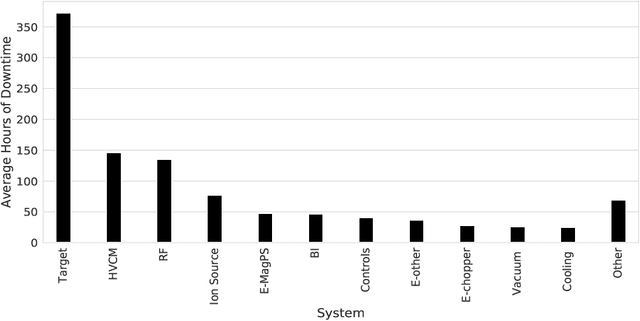



Abstract:We present a multi-module framework based on Conditional Variational Autoencoder (CVAE) to detect anomalies in the power signals coming from multiple High Voltage Converter Modulators (HVCMs). We condition the model with the specific modulator type to capture different representations of the normal waveforms and to improve the sensitivity of the model to identify a specific type of fault when we have limited samples for a given module type. We studied several neural network (NN) architectures for our CVAE model and evaluated the model performance by looking at their loss landscape for stability and generalization. Our results for the Spallation Neutron Source (SNS) experimental data show that the trained model generalizes well to detecting multiple fault types for several HVCM module types. The results of this study can be used to improve the HVCM reliability and overall SNS uptime
Fault Prognosis in Particle Accelerator Power Electronics Using Ensemble Learning
Sep 30, 2022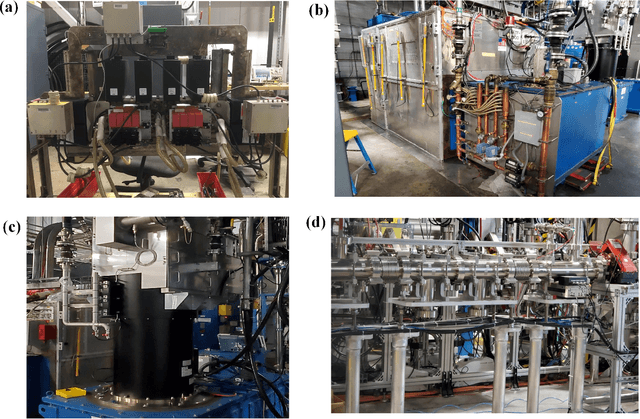
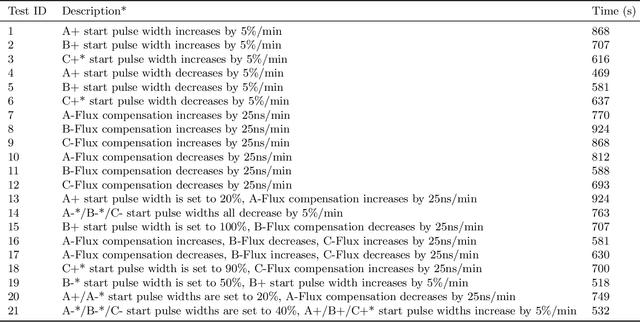
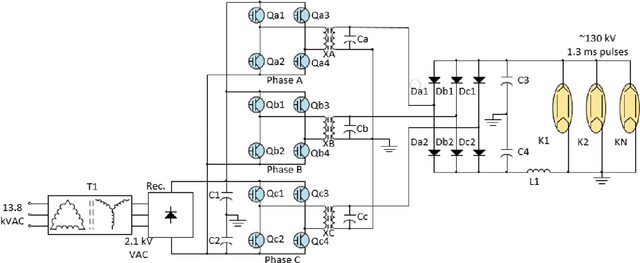
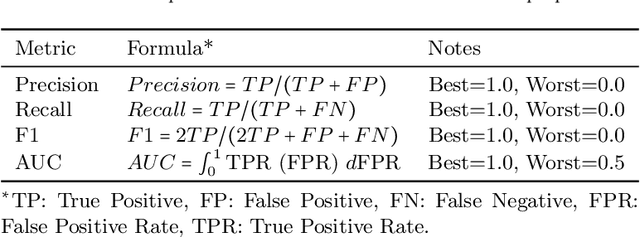
Abstract:Early fault detection and fault prognosis are crucial to ensure efficient and safe operations of complex engineering systems such as the Spallation Neutron Source (SNS) and its power electronics (high voltage converter modulators). Following an advanced experimental facility setup that mimics SNS operating conditions, the authors successfully conducted 21 fault prognosis experiments, where fault precursors are introduced in the system to a degree enough to cause degradation in the waveform signals, but not enough to reach a real fault. Nine different machine learning techniques based on ensemble trees, convolutional neural networks, support vector machines, and hierarchical voting ensembles are proposed to detect the fault precursors. Although all 9 models have shown a perfect and identical performance during the training and testing phase, the performance of most models has decreased in the prognosis phase once they got exposed to real-world data from the 21 experiments. The hierarchical voting ensemble, which features multiple layers of diverse models, maintains a distinguished performance in early detection of the fault precursors with 95% success rate (20/21 tests), followed by adaboost and extremely randomized trees with 52% and 48% success rates, respectively. The support vector machine models were the worst with only 24% success rate (5/21 tests). The study concluded that a successful implementation of machine learning in the SNS or particle accelerator power systems would require a major upgrade in the controller and the data acquisition system to facilitate streaming and handling big data for the machine learning models. In addition, this study shows that the best performing models were diverse and based on the ensemble concept to reduce the bias and hyperparameter sensitivity of individual models.
Model Calibration of the Liquid Mercury Spallation Target using Evolutionary Neural Networks and Sparse Polynomial Expansions
Feb 18, 2022



Abstract:The mercury constitutive model predicting the strain and stress in the target vessel plays a central role in improving the lifetime prediction and future target designs of the mercury targets at the Spallation Neutron Source (SNS). We leverage the experiment strain data collected over multiple years to improve the mercury constitutive model through a combination of large-scale simulations of the target behavior and the use of machine learning tools for parameter estimation. We present two interdisciplinary approaches for surrogate-based model calibration of expensive simulations using evolutionary neural networks and sparse polynomial expansions. The experiments and results of the two methods show a very good agreement for the solid mechanics simulation of the mercury spallation target. The proposed methods are used to calibrate the tensile cutoff threshold, mercury density, and mercury speed of sound during intense proton pulse experiments. Using strain experimental data from the mercury target sensors, the newly calibrated simulations achieve 7\% average improvement on the signal prediction accuracy and 8\% reduction in mean absolute error compared to previously reported reference parameters, with some sensors experiencing up to 30\% improvement. The proposed calibrated simulations can significantly aid in fatigue analysis to estimate the mercury target lifetime and integrity, which reduces abrupt target failure and saves a tremendous amount of costs. However, an important conclusion from this work points out to a deficiency in the current constitutive model based on the equation of state in capturing the full physics of the spallation reaction. Given that some of the calibrated parameters that show a good agreement with the experimental data can be nonphysical mercury properties, we need a more advanced two-phase flow model to capture bubble dynamics and mercury cavitation.
 Add to Chrome
Add to Chrome Add to Firefox
Add to Firefox Add to Edge
Add to Edge